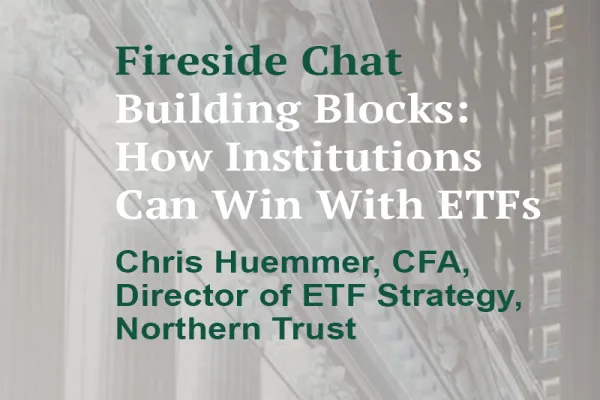By David Gould
Amid the many factors helping investors assess the quality and risk profile of companies, management of environmental, social and governance (ESG) issues, can be important to sustaining growth and profitability—it’s an area investors and other stakeholders increasingly want corporations to get right.
Performance on this front can potentially affect valuations and influence which stocks are selected for a portfolio. It boils down to what Guillaume Mascotto, Head of ESG at American Century Investments, calls: “Integrated risk assessment.” More than a mere product category or a corporate responsibility exercise, ESG analysis is an important input to the investment process which, alongside fundamental analysis, can help investors make better long-term decisions.
Today, the most optimal ESG strategies are aimed at systematically combining ESG risk assessment and expected alpha. It’s a far cry from the too-basic ESG “overlay,” a half-measure that only clouds the picture at a time when even third-party indices can seem inconclusive. Mascotto, in concert with American Century’s portfolio managers and investment analysts, is charged with integrating material ESG factors into the investment process. American Century’s own strategy starts with a three-layer analysis that identifies macro-level ESG issues impacting market dynamics, determines which of these issues are relevant at the sector level, and—using a proprietary scoring model—evaluates ESG materiality at the issuer level.
Solutions-driven
If you specialize in ESG investing, you get used to the hot-button nature of environmental and social issues, even while placing equal or even greater emphasis on the more complex world of corporate governance.
“How well-governed a corporation is and the extent to which shareholder interests are protected – that’s always an analytical imperative, applicable to all sectors,” Mascotto points out. “It speaks to the overall management quality of a business. By contrast, environmental and social variables address risk and opportunities that are often specific to an industry and associated business lines.”
Learn more about fundamental analysis in ESG investing.
In Mascotto’s experience, asset managers see governance as most important to portfolio risk and return, while for asset owners it’s the social and environmental issues that matter more. As the latter two factors get explored in depth, variances in priority begin to appear, based on variables such as investment values, culture, and regulatory contexts.
“For U.S. companies, the test of corporate citizenship may focus on issues like positive economic impact on communities,” says Mascotto, a reference to local hiring, local procurement, taxes paid, and the like. “It will also take into account regulatory compliance.” Outside of the U.S., different issues take priority. In Europe, in addition to regulatory compliance, there is a stronger emphasis on environmental issues like climate change adaptation and social issues including gender diversity, executive pay equity, and labor relations. Then, as you look at Japan, there is a particular sensitivity to the U.N. Sustainable Development Goals and technological solutions toward meeting them.
Against this backdrop, while American Century emphasizes ESG integration when clients seek advice, its platform takes a global outlook and is solutions-driven. Based on the unique needs of different investors, American Century has strengthened its capabilities and offers bespoke ESG solutions for its clients.
Risk management upside potential
Meticulous governance, transparent disclosures, and vigilant attention to corporate sustainability, ethics and fairness earn high investor confidence, but there are bumps in every company’s road. Reputations can take a hit from any number of causes, and well-run firms will respond accordingly. If a company endures a significant public flogging, an integrated process allows for a deeper assessment into whether the company is taking proper steps to right the ship and prevent another damaging event from occurring. “If so,” he says, “we’ll be looking for risk management upside potential in the form of spread-tightening or growth inflection, based on this new course of behavior."
Meanwhile, when the broad brush of negative publicity sweeps through a particular industry, there may well be companies unfairly tainted by it. This is where the American Century trademark of “bottom-up” and active investment management becomes so relevant in the ESG context.
“We are active managers,” says Mascotto. “We take a full account of macro conditions, but at the same time we are scrutinizing a sector fundamentally to find subtleties not captured by the ESG ratings agencies. We aren’t buying the energy sector, for example, we’re buying the best within that sector—we seek companies with solid margins of safety to weather any ESG-related costs, and the appropriate strategic direction for adapting to market dynamics as they evolve.”
Meeting with company management is a key component of American Century’s fundamental research process, which afford investors insights into how companies are planning to steer their way amid market shifts. This is something ESG ratings cannot offer, and a factor that a bottom-up ESG integration approach seeks to overcome.
Not Necessarily a Trade-off
It’s likely ESG investing will continue to evolve, as more investors seek solutions to mitigate downside risk or capture upside potential associated with ESG issues, while simultaneously generate risk-adjusted returns. A central component of American Century’s approach is that investors do not need to make a binary distinction between ESG and returns. Integration can be achieved without necessarily an implied trade-off. This is what Mascotto qualifies as “ESG equilibrium.”
There will always be an art to this branch of investing, but the science part of it – now well established at American Century – will continue to be to be deepened, sharpened and expanded, so that an equal balance between environmental, social and economic considerations can be optimally achieved.
Learn more about fundamental analysis in ESG investing.
Risk management does not indicate there is no risk of investment.
This material has been prepared for educational purposes only. It is not intended to provide, and should not be relied upon for investment, accounting, legal or tax advice.
FOR INSTITUTIONAL USE ONLY/NOT FOR PUBLIC USE
©2018 American Century Proprietary Holdings, Inc. All rights reserved.






